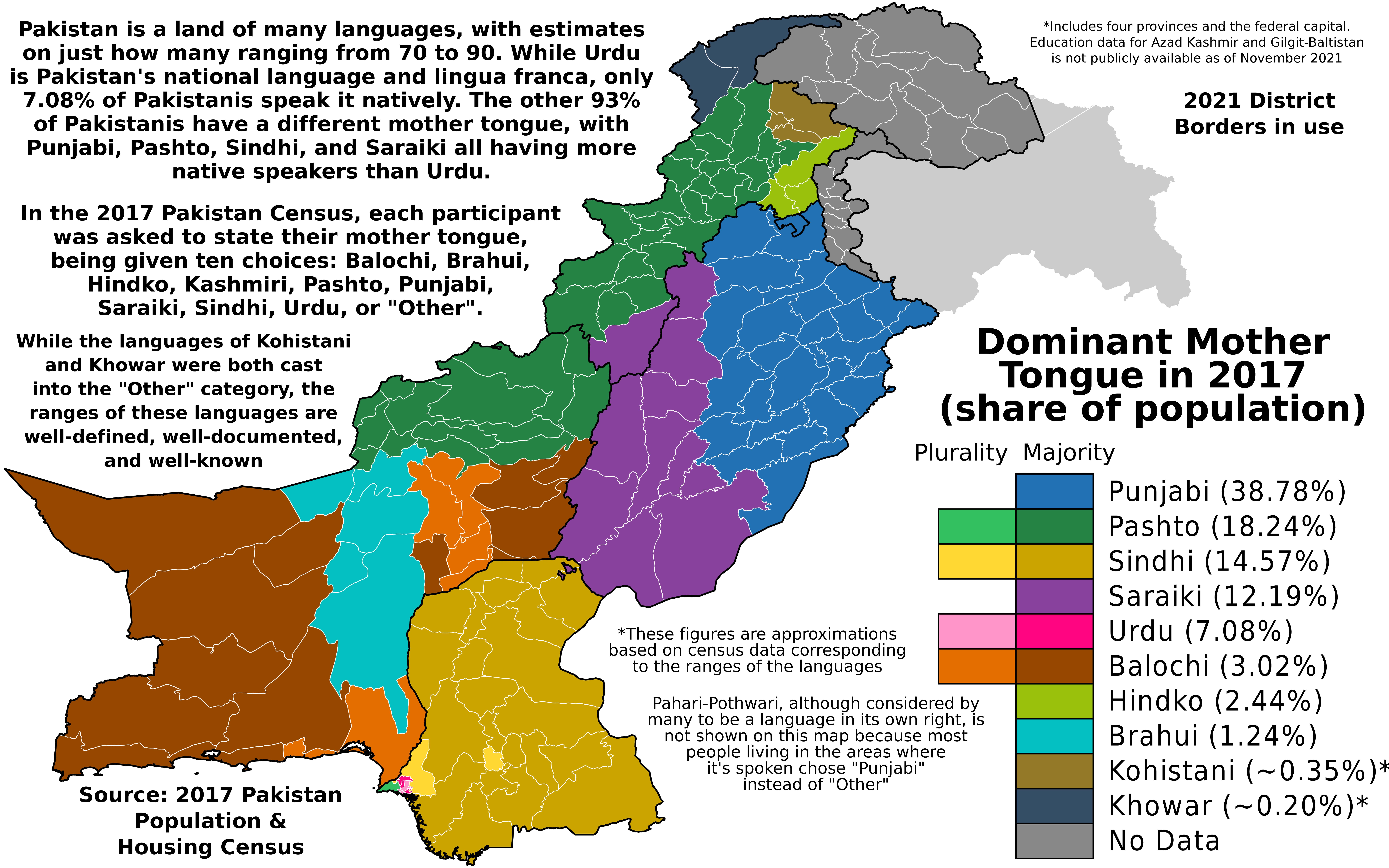People of Pakistan
Pakistanis (Urdu: پاكِستانى قوم; Pakistani Qaum) are the people who are citizens of the modern State of Pakistan and their descendants. Pakistan is a multi-ethnic and multilingual state, and its people are predominantly Indo-Iranian both ethnically and linguistically, varying between predominantly Indo-Aryan and Iranian subgroups.
Pakistani people belong predominantly to seven main ethnolinguistic groups: Punjabis, Sindhis, Seraikis, Pashtuns, Mohajirs, Balochs, and Kashmiris, Ranghar, with substantial numbers of Brahuis, Hindkowans, Shins, Burushos, Wakhis, Baltis, Chitralis and other small, minority ethnic groups in the remote north of the country.
Languages People Speak in Pakistan
The official language is English, and most urban people can understand and speak Urdu as well. However, Urdu is the mother tongue of only seven percent of the population. The other main languages are Sindhi, Punjabi, Pushto, Balochi, Siraiki, and Brahvi. More than half the working population is involved in agriculture and live in rural areas. Manufacturing, mining, and service industries are the other large employers in the urban sectors. Many people go abroad in search of work.

Race as such plays little part in defining regional or group identity in Pakistan, and no ideal racial type is accepted by all Pakistanis. However, the-lingual processes over the centuries have helped developed nationalities and ethnic-lingual groups who have a deep sense of identity, psychological make-up, commonality of language and area, and belonging to certain regions of Pakistan. The population is a complex mixture of indigenous peoples, many racial types having been introduced by successive waves of migrations from the northwest, as well as by internal migrations across the subcontinent of India. Aryans, Persians, Greeks, Pathans (Pashtuns), and Mughals came from the northwest and spread across the Indo-Gangetic Plain, while the Arabs conquered Sindh. All left their mark on the population and culture of the land. During the long period of Muslim rule, immigrants from the Middle East were brought in and installed as members of the ruling oligarchy. It became prestigious to claim descent from them, and many members of the landed gentry and of upper-class families are either actually or putatively descended from such immigrants.

